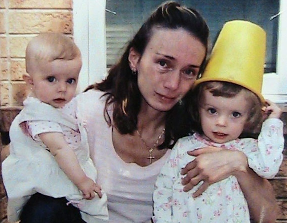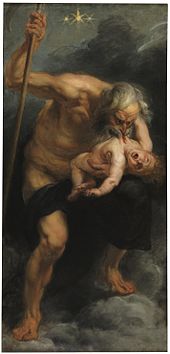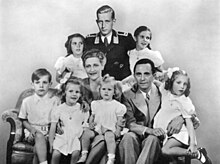Infanticide is the intentional killing of infants or offspring. Infanticide was a widespread practice throughout human history that was mainly used to dispose of unwanted children, its main purpose being the prevention of resources being spent on weak or disabled offspring. Unwanted infants were usually abandoned to die of exposure, but in some societies they were deliberately killed. Infanticide is broadly illegal, but in some places the practice is tolerated, or the prohibition is not strictly enforced.

A serial killer is typically a person who murders three or more persons, with the murders taking place over more than a month and including a significant period of time between them. While most authorities set a threshold of three murders, others extend it to four or lessen it to two.

Flavius Julius Crispus was the eldest son of the Roman emperor Constantine I, as well as his junior colleague (caesar) from March 317 until his execution by his father in 326. The grandson of the augustus Constantius I, Crispus was the elder half-brother of the future augustus Constantine II and became co-caesar with him and with his cousin Licinius II at Serdica, part of the settlement ending the Cibalensean War between Constantine and his father's rival Licinius I. Crispus ruled from Augusta Treverorum (Trier) in Roman Gaul between 318 and 323 and defeated the navy of Licinius I at the Battle of the Hellespont in 324, which with the land Battle of Chrysopolis won by Constantine forced the resignation of Licinius and his son, leaving Constantine the sole augustus and the Constantinian dynasty in control of the entire empire. It is unclear what the legal status of the relationship Crispus's mother Minervina had with Constantine was; Crispus may have been an illegitimate son.

Abbas I, commonly known as Abbas the Great, was the fifth shah of Safavid Iran from 1588 to 1629. The third son of Shah Mohammad Khodabanda, he is generally considered one of the greatest rulers of Iranian history and the Safavid dynasty.
Parricide refers to the deliberate killing of one's own father and mother, spouse, children, and/or close relative. However, the term is sometimes used more generally to refer to the intentional killing of a near relative. It is an umbrella term that can be used to refer to acts of matricide and patricide.

Matricide is the act of killing one's own mother.
Uxoricide is the killing of one's own wife. It can refer to the act itself or the person who carries it out. It can also be used in the context of the killing of one's own girlfriend. The killing of a husband or boyfriend is called mariticide.

Otto Ohlendorf was a German SS functionary and Holocaust perpetrator during the Nazi era. An economist by education, he was head of the Sicherheitsdienst (SD) Inland, responsible for intelligence and security within Germany. In 1941, Ohlendorf was appointed the commander of Einsatzgruppe D, which perpetrated mass murder in Moldova, south Ukraine, the Crimea and, during 1942, the North Caucasus. He was tried at the Einsatzgruppen Trial, sentenced to death, and executed by hanging in 1951.
Mariticide literally means the killing of one's own husband. It can refer to the act itself or the person who carries it out. It can also be used in the context of the killing of one's own boyfriend. In current common law terminology, it is used as a gender-neutral term for killing one's own spouse or significant other of either sex. The killing of a wife or girlfriend is called uxoricide.
A familicide is a type of murder or murder-suicide in which an individual kills multiple close family members in quick succession, most often children, spouses, siblings, or parents. In half the cases, the killer lastly kills themselves in a murder-suicide. If only the parents are killed, the case may also be referred to as a parricide. Where all members of a family are killed, the crime may be referred to as family annihilation.
The Macdonald triad is a set of three factors, the presence of any two of which are considered to be predictive of, or associated with, violent tendencies, particularly with relation to serial offenses. The triad was first proposed by psychiatrist J. M. Macdonald in "The Threat to Kill", a 1963 article in the American Journal of Psychiatry. Small-scale studies conducted by psychiatrists Daniel Hellman and Nathan Blackman, and then FBI agents John E. Douglas and Robert K. Ressler along with Ann Burgess, claimed substantial evidence for the association of these childhood patterns with later predatory behavior. Although it remains an influential and widely taught hypothesis, subsequent research has generally not validated this line of thinking.
Neonaticide is the deliberate act of a parent murdering their own child during the first 24 hours of life. As a noun, the word "neonaticide" may also refer to anyone who practices or who has practiced this.
Avunculicide is the act of killing an uncle. The word can also refer to someone who commits such an act. The term is derived from the Latin words avunculus meaning "maternal uncle" and caedere meaning "to cut down" or "to kill". Edmunds suggests that in mythology avunculicide is a substitute for parricide. The killing of a nephew is a nepoticide.
The murders of Koby Mandell and Yosef Ishran occurred on 8 May 2001, when two Jewish teenagers, Yaakov "Koby" Mandell and Yosef Ishran, were killed on the outskirts of the Israeli settlement of Tekoa in the West Bank, where they lived with their families. The identity of the killers has never been determined, though Israel and a number of sources state that unidentified Palestinian terrorists were responsible.
Davina and Jasmine Kumari-Baker were murdered by their mother who stabbed them to death at their home in Stretham, Cambridgeshire, England, while they slept on 13 June 2007. Rekha Kumari-Baker was sentenced to life imprisonment with a minimum tariff of 33 years. In 2010 the BBC stated that the punishment was "one of the longest jail terms given to a woman in the UK in modern times."
Mohammad Baqer Mirza better known in the West as Safi Mirza (صفیمیرزا) was the oldest son of Shah Abbas the Great, and the crown prince of the Safavid dynasty during Abbas' reign and his own short life.

John David Battaglia Jr. was an American convicted murderer who was executed by the state of Texas for filicide. He was convicted of killing his two young daughters in May 2001 in an act of "ultimate revenge" against his estranged ex-wife, Mary Jeane Pearle, who had separated from him after his numerous instances of assault and violence. Battaglia was executed for the murders on February 1, 2018.

Frances Elaine Campione is an Ontario woman who murdered her two children in Barrie, Ontario, on October 2, 2006. Canadian prosecutors argued that she wanted to get revenge on her ex-husband and was afraid he would receive custody.

The Disability Day of Mourning is observed annually on 1 March to commemorate disabled people who were murdered by their caregivers, especially their parents. First observed in 2012 and propagated by disability rights organizations such as Not Dead Yet and the Autistic Self Advocacy Network, the day aims to bring attention to the issue of filicide of disabled children and adults and the degree to which such murders are treated as different from or more socially acceptable than similar murders of abled people.



















